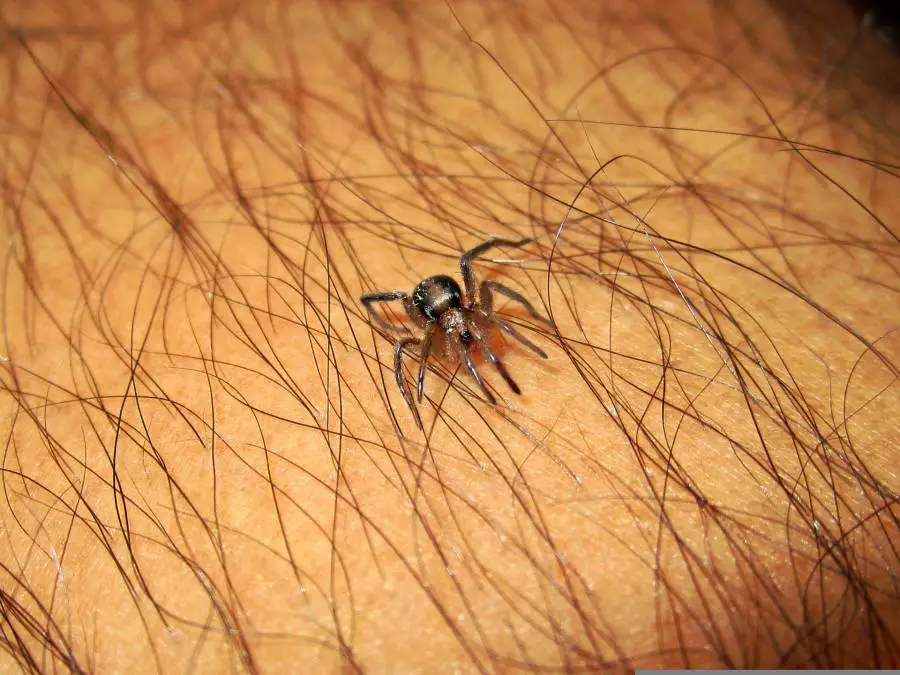Table of Contents
We are faced with spider bites every day, especially in the USA. These crawling insects can sneak into your shoes, clothes, and bedding when you least expect it.

Thus, it’s crucial to be ready for action when they strike.
This guide will teach you how to draw poison from a spider bite. It should help you avoid panic and even save a soul.
Understanding Spiders
A poisonous spider poses little to no threat to humans. On the other hand, Venomous ones should be a concern that requires quick action for everyone.
Unfortunately, many people can’t make a difference, so they often find themselves in trouble.
The first step in dealing with spider venom is to determine these differences.
Even if you visit the hospital immediately, doctors will want to know which spider bit you picked the correct anti-venom.
There are two major categories of spiders:
Nonvenomous
These spiders may have venom, but it’s not fatal for humans. Bites from them could only cause minor irritations unless the victim has a severe allergy.
The brown widow spider from the Southern and Western US is a good example. Cellar spiders, funnel spiders, hobo, huntsman, jumping, wolf spiders, etc., are not venomous.
Bites from these spiders are easy to handle, whereas some may only require washing the area with soap and water.
Venomous Spiders
If a venomous spider has beaten you or a loved one, you must seek medical help as fast as possible. In the US, brown recluses and black widows are the only venomous spiders.
Others find outside the US include the Brazilian wandering and the funnel-web spiders from South America and Australia, respectively.
Also, the female redback spider found in Australia, New Zealand, Belgium, and Japan is a serious threat to humans. The male redback is not harmful, though.
Search for medical advice immediately if you suspect the spider that bit you is toxic.
It’s possible not to develop severe reactions immediately, but that does not mean you are off the hook.
Handling Spider Bites
As stated above, the first step is understanding different spiders and how they affect human beings.
Next, call your doctor immediately if you notice a spider bite on any part of your body.
Even if the spider is nonvenomous, it still helps to stay on the safe side. A doctor will advise you on dealing with allergic reactions wherever possible and prevent severe outcomes.
So, visit a hospital as soon as you realize the bite.
How To Draw Out Spider Poison – Step-By-Step Guide
You can take several actions to reduce the swelling when bit by a spider. Quick fast-aid action will also help in healing the wound.
All spiders are venomous. Please don’t get this wrong, as we have mentioned non-venomous ones.
It is because only certain species are dangerous to humans.
Most people are beaten while in their homes. So, watch out for brown recluses and black widow spiders.
Their bites call for immediate and serious medical attention, failure to which could cause severe pain and serious damage to your skin.
Apart from the standard treatment procedures, you can use some eco-friendly ways to take care of the bite. And that includes drawing out the poison.
Here is the step to follow:
Step 1: Clean The Area
We will talk about the symptoms and signs of a spider bite later, in case you didn’t see it bite you. But if you saw it, the first step is to clean the area thoroughly.
Use soap and water to clean the area. It will eliminate any leftover venom and dirt that could cause an infection.
Step 2: Disinfect
The first step may not be sufficient to disinfect the affected area. Hence, it would help if you had something more potent and effective.
Check around the kitchen or area if you have some peroxide and rubbing alcohol. It is pretty effective in treating any bites and necessary for disinfecting wounds.
It is one of the reasons you are always advised to keep some of them in your home. You never know when an emergency like this may strike.
Luckily, using them is no rocket science. Wrap around the wound.
It might stink a little. But don’t worry, it only means the disinfectant is taking effect.

Step 3: Neutralize The Venom
Do not attempt drawing out the poison without neutralizing it first. For this step, use baking soda, bleach, and water.
These agents react with the poison to make it less dangerous.
The way you mix them is crucial, though. They must be in equal measure and stirred until they mix entirely to form a solution.
Remember, this treatment stinks and could feel painful depending on the species that caught you. Try using ice cubes to freeze the bite and reduce the pain by numbing the area.
Step 4: Draw Out The Poison Using Plantain Leaves
Plantain plants have been used for centuries by native people. They are effective natural cleaning agents that will not cause any harm to the user.
However, proper application is required, even though they are easy to use. Wrap a few leaves to the bite using a bandage, then leave them for a few hours.
Do hurry to remove them, even if you are still feeling some pain.
Step 5: Apply Natural Oil
We use natural remedies and readily available materials to draw out the poison. In this step, therefore, we suggest using peppermint oil.
It is a natural chemical that reduces swelling and improves blood circulation, helping you to heal faster.
Step 6: Taking Care Of The Itching
Itching is a natural reaction during the healing process. You rub some deodorant on the area, which takes care of the itching and irritation.
Seek Medical Care
We have recommended these steps for anyone who needs quick assistance. Perhaps you are camping, and there are no hospitals around.
You apply the procedure to keep the bite effects from spreading too far.
Ensure you visit your doctor as soon as possible. A medical examination will determine and deal with other issues, including possible allergic reactions.
It should, therefore your first intention to get assistance from a hospital.
Can You Suck Out Spider Poison Orally?
Sucking out the snake and spider poison has been used for ages. But it’s not recommended anymore, as it was discredited a few years ago.
Therefore, you should NEVER attempt this method as it could lead to further infection.
How Can You Tell A Spider Bite?
You might not feel the effects of a spider bite until after a few minutes. It’s much easier if you see the insect in action and take the necessary steps immediately.
But if you start feeling irritation in a part of your body and suspect a spider bite, pay attention to the signs.
These include a pair of tiny puncture wounds, swellings or lumps, a rush/redness, blisters, pain, itching, and numbness.
More dangerous spider bites may show signs like a red or purple bull’s-eye-like ring, headache, muscle cramps, anxiety, high blood pressure, salivation, and lack of balance.
Seek doctor’s care as soon as you realize such things.
Conclusion
Drawing poison out of a spider bite is not easy or amusing. It calls for a serious effort.
The idea is to limit the inflammation and swelling while ensuring the poison does not spread to the body, causing more severe problems.
You can use this guide with other treatment methods to stay safe. Also, remember that prevention is much better than cure.
So, avoid spider bites in your home as much as possible.

![[Tutorial] How to Build a Bug Out Bag Correctly [Tutorial] How to Build a Bug Out Bag Correctly](https://homesteadandprepper.com/wp-content/uploads/2015/02/disaster.jpg)

![What To Put On Windows To Keep Heat Out? [8 Ideas] What To Put On Windows To Keep Heat Out? [8 Ideas]](https://homesteadandprepper.com/wp-content/uploads/2021/04/Window-blinds-To-Keep-Heat-Out-150x150.jpg)




